Each month we'll get a glimpse into the mind -- and the menus -- of Chris Fischer, the chef behind Martha's Vineyard's beloved Beach Plum Restaurant and Beetlebung Farm.
Today: Chris and team celebrate October with a fall farm dinner -- and share a video on fileting bonito.
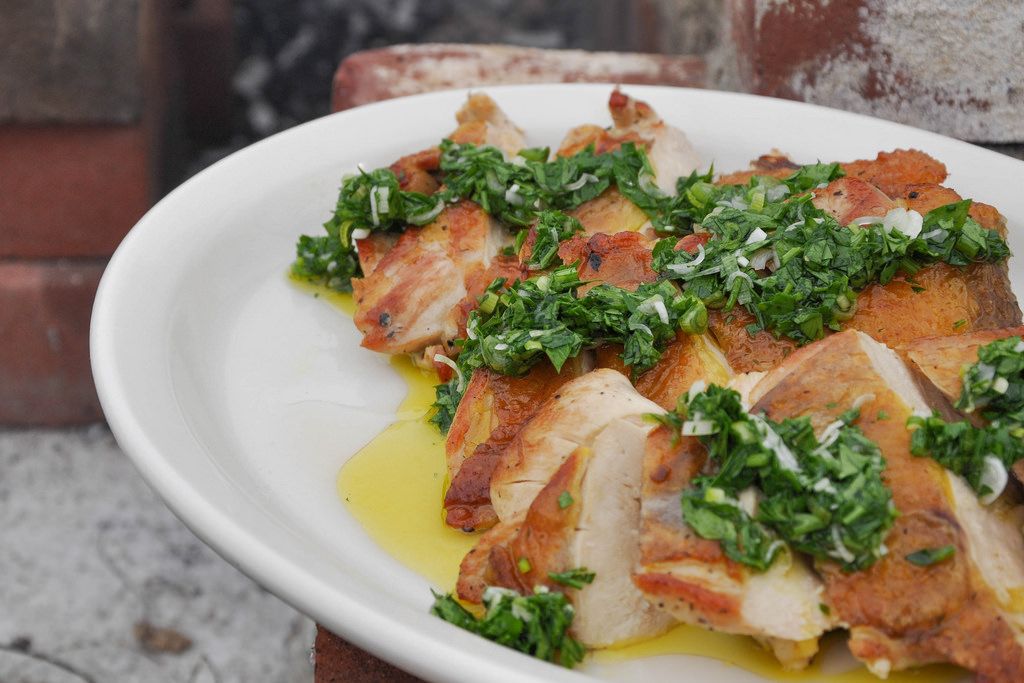
October is a quiet month on Martha’s Vineyard. The grass grows green and lush again after an arid summer, while most of the seasonal visitors have settled back into work, school, and life’s other routines. Back home on the farm the vegetables are growing with renewed vigor as the cold nights sweeten the last of the lettuces in our fields, as well as the heartier kale, chard, and spinach; meanwhile, our roots and winter squash are beginning to ripen. The leaves are holding on for another few weeks before turning and falling. Life is calm again.
October is a time of transition and meals reflect a hybrid of seasons, before we all hunker down during the cold months and our fields are covered with winter rye for protection. The annual Bass and Bluefish Derby is in full swing, as recreational fishermen of all ages hit the shores to compete for the biggest fish. Bonito and albacore dart quickly through our waters and are plucked skillfully from just offshore. Albacore rarely make it to the dinner table, but the bonito are prized for their subtle pink flesh and rich meat.
At the farm we celebrated this short period of bliss with a protein-rich, warming meal, cooked over an extra-large fire. With duck and goose hunting season open now we have game hanging, aging, and ready for the freezer. This meal is meant to begin simply: raw Bonito flourished with fennel blossoms, followed with a hearty and crunchy salad of Little Gems dressed richly with crème fraîche and a bright salsa verde that doubles as the only dressing needed for perfectly cooked Guinea Hen breasts. It's too early to start on the hearty soups and stews of winter; this somewhat quirky meal is an ideal way to hang on to these cool fall days.
In celebration of the transition, here's what's on the menu for a fall farm dinner:
Bonito Crudo
Bonito are rare on the mainland; their migration patterns and aversion to fishermen keep them from showing up in most fish markets. Bonito is a relative of tuna -- although smaller in size, with paler flesh. The last of the fast-swimming Bonito were brought in by Island legend, renowned musician and master fisherman Johnny Hoy who also drags for the best oysters I know of on The Great Pond near his home.
I like to treat them as the Japanese treat all fish: as a delicacy worth observing and reacting to with extreme care. Certain species of fish are best straight from the ocean, while others grow and mature in flavor as they rest out of the water. Over time, I've found Bonito is best aged slightly for a few days, when their oily loins and belly become perfectly flavorful and fishy (in a good way).

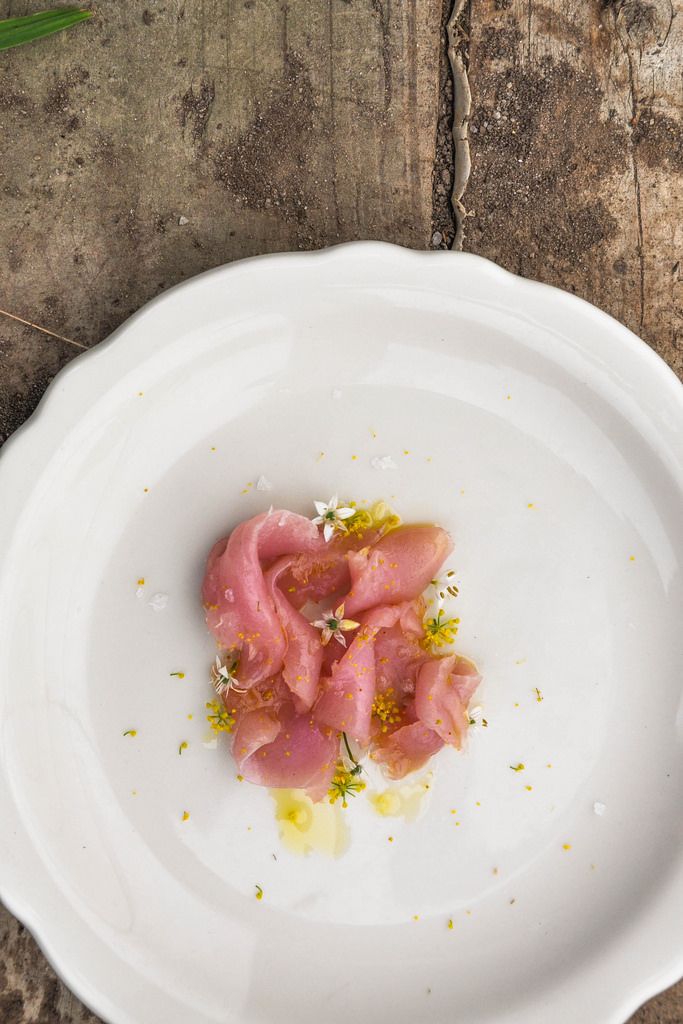
Larsen’s, the best fish market I know, usually gets afternoon deliveries off the docks behind their shop in Menemsha -- and by the time they make their way up the hill to our restaurant, the Bonito have been out of the ocean for at least twelve hours. First, we clean the whole fish, filleting the belly and loins, trimming their bloodlines, always leaving the skin on. They are then rinsed in ice-cold, salted water and left on a drying rack in the walk-in overnight. The best way to pinpoint the freshness of your fish is to ask questions of your local fish monger and use your best judgement; most fish are two days old when you see them in the market.
More: Here are a few other pointers for choosing the freshest fish.
I usually choose to sauté Bonito the first day we have it in-house -- the oil and caramelization from a hot pan lends flavor to the otherwise mild, but fresh fish. On the second day in-house, we serve the fish as a crudo -- Italian for "raw" -- simply dressed with rock salt and oil and finished with a few brilliant fennel blossoms.
Little Gem Salad with Crème Fraîche and Bacon
After what has become a frustrating trend of hot and dry summers on the island, the rain is finally here, and the greens in our fields are growing rapidly. Despite the near-drought, we've grown beautiful Little Gem lettuces on Beetlebung Farm throughout the season; they have been a staple on menus across the Bay Area for years.

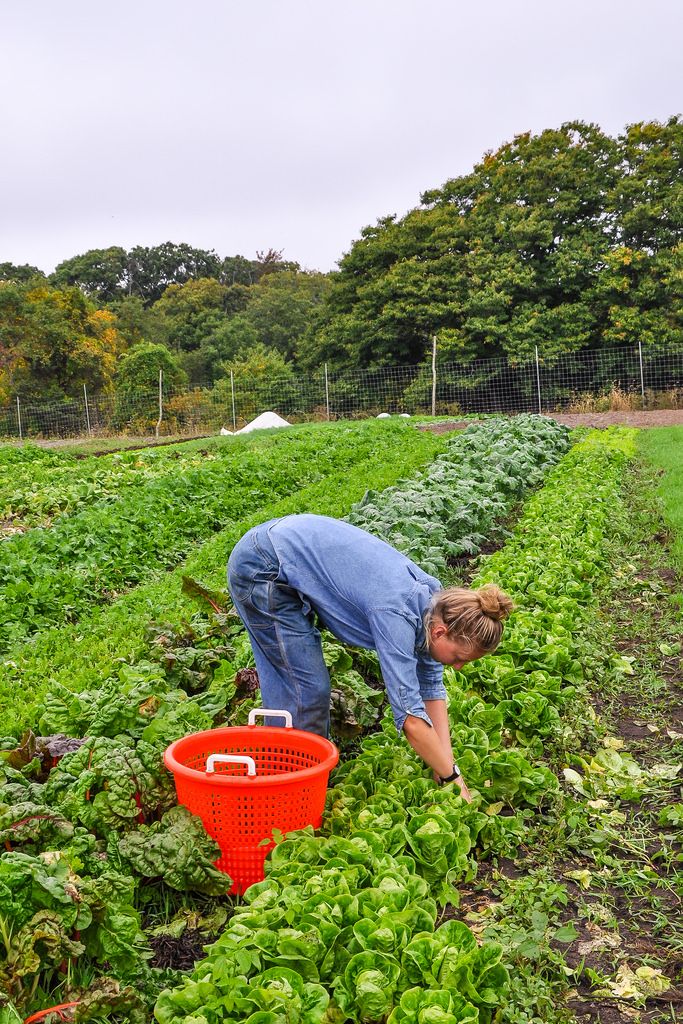
It is a compact and crunchy, yet delicate, lettuce -- a miniature variety of Romaine -- with perfect almost-bite-sized leaves. Little Gems, like their super-sized cousins, lend well to heartier dressings; in this case, for increased umami and soul, we added bacon from our own Berkshire pigs. (One of our sows, Lilly, just gave birth to fourteen piglets, and our staff took turns sharing the bottle feeding responsibilities of two runts, whom we are happy to report are growing stronger.)

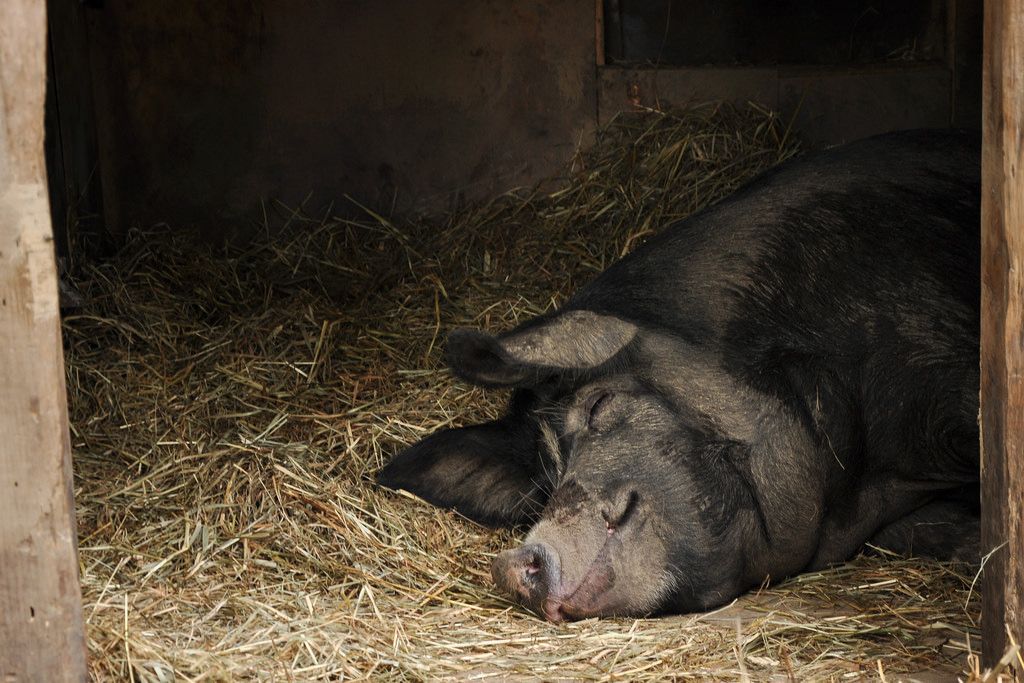
For the dressing, use creamy, fatty, homemade crème fraîche and drizzle it into salsa verde to add brightness and texture.
More: Toss your leftover crème fraîche into this Broccolini Pesto Pasta.
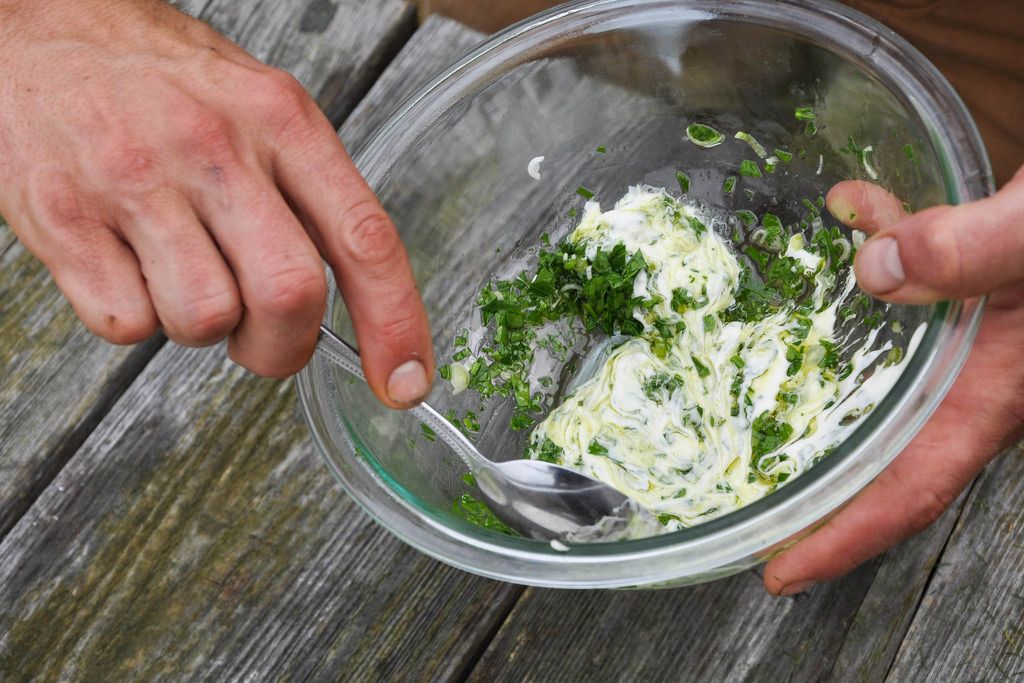
This salad is satisfying enough that it could be served on its own for a light meal, but if you are in need of more protein, the leftover salsa verde can be layered on top of Guinea Hen.

Guinea Hen Breast with Salsa Verde
Guinea Hens -- which are somewhat wild here on Martha's Vineyard, but certainly not indigenous to the island -- provide a full-flavored, lean, and nutrient-rich alternative to chicken, due to the Guinea Hens' proclivity to exercise and flight. My friend, Jefferson of the Good Farm, has successfully raised his share of Guinea Hens in confinement.
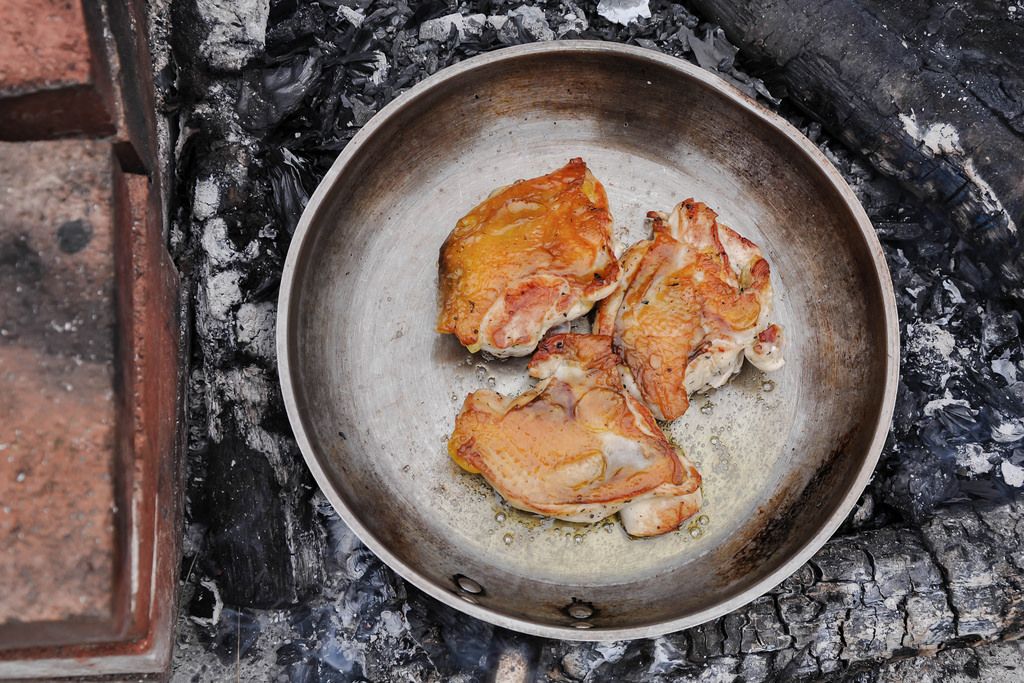
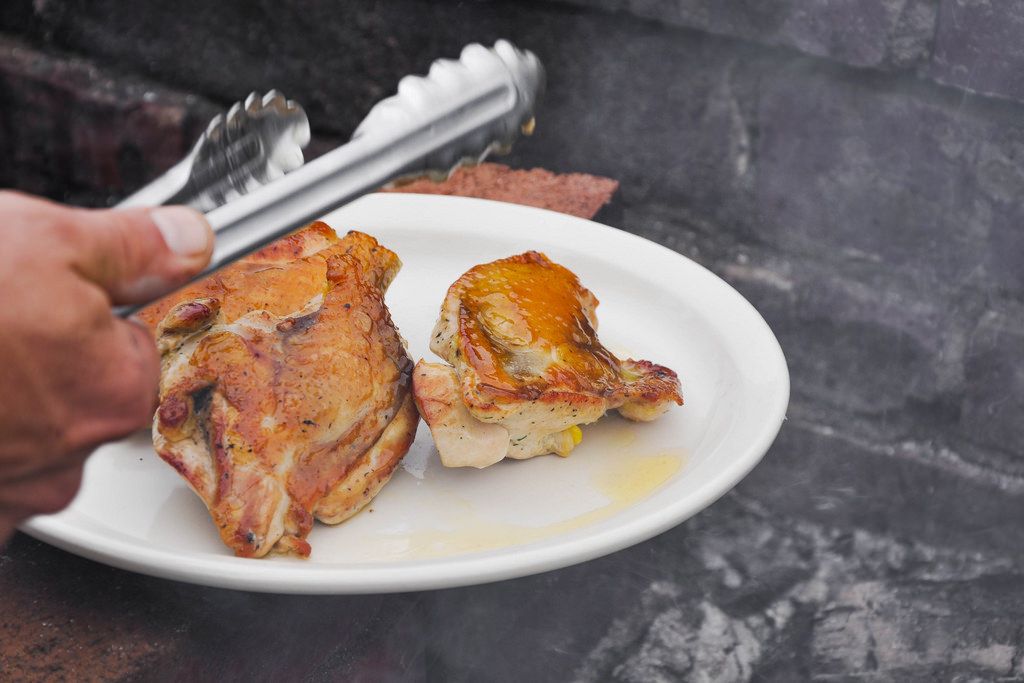
His most recent flock escaped their makeshift coop and went near-feral in his surrounding Oak trees. Jefferson and crew camped out during the night, plotting capture of the Hens perched in the mighty trees.
The Guinea Hen we have been serving came from this fugitive flock. Pan-searing the breast slowly means a consistent rendering of fat and crisping of the skin, with ample time for the flesh to collect a nice smoky flavor. Finishing with salsa verde adds a flourish that brightens a very simple, satisfying dish -- the perfect ending to a bountiful meal.

Bonito Crudo
Serves 6
1 pound bonito loin or yellowfin tuna loin, ideally aged two to three days
2 teaspoons (approximately 18) fresh fennel blossoms
Hearty pinch of Maldon rock salt
See the full recipe (and save and print it) here.
Little Gem Salad with Crème Fraîche and Bacon
Serves 6
3 heads little gem, well washed, quartered and soaked again
1/2 pound good-quality bacon
2 tablespoon crème fraîche
2 tablespoon water
2 tablespoon salsa verde
1 tablespoon fresh lemon juice
1 tablespoon olive oil
Rock salt
Pepper
See the full recipe (and save and print it) here.
Guinea Hen Breast with Salsa Verde
Serves 6
6 Guinea Hen breasts
1 tablespoon olive oil
Salt
Thyme
4 tablespoon salsa verde
See the full recipe (and save and print it) here.
Photos by Elana Carlson, Video by Conor Hagen

A New Way to Dinner, co-authored by Food52's founders Amanda Hesser and Merrill Stubbs, is an indispensable playbook for stress-free meal-planning (hint: cook foundational dishes on the weekend and mix and match ‘em through the week).
Order now
See what other Food52 readers are saying.